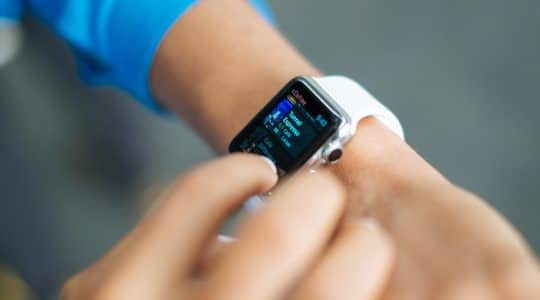When looking at customer acquisition, it’s important to look beyond vanity metrics such as the number of installs. Vanity metrics are easy to report on, but they don’t provide an accurate picture of the value of your mobile marketing efforts. Mobile isn’t just a siloed part of your brand. It is a representation of your entire brand that users will want to engage with. Mobile marketers need to think critically to measure the metrics that matter most to the bottom line.
These are five types of reports marketers should use to measure their mobile performance:
Funnels – What are the important flows and goals in your app that you want users to follow and complete. Marketers want users to engage with a mobile app in a particular way. In a funnel view, look at the steps or events that you want users to accomplish and also look where users are leaking out of the funnel. If there is a desirable action or path that you want users to take, look at the percentage of users that are completing those actions. For example, you might want to look at a funnel for making a basic purchase, and examine how many units were sold and the number of people that made a purchase. Without looking at how many people started the process of checking out, you can’t really know the earning potential. You can also evaluate specific items to see which products are more successful in driving users all the way through the funnel. For flows that have a low conversion rate, funnels can help marketers see at what stages there are opportunities for improvement.
Cohorts – A cohort is a group of users that completed a specific action (install, open, uninstall) for the first time within a particular window of time. Given this, we can evaluate a range of data patterns such as the rate of active users and the retention rate of users after an app update. Do people that started using your app in Version 1 use the same features and functionality as users that use Version 2 of your app? By using cohort analysis mobile marketers can execute an “apples to apples” comparison, something that’s not possible with linear analysis.
Retention – Beyond looking at what a group of users are doing with your app, you also want to understand the length of engagement of your users over time. It’s important to distinguish users who intensely use your app for the first 30 days versus users who moderately use your app for life. The analysis of this type of usage helps marketers learn how to fine-tune the design of the app and optimize particular flows throughout the app.
Loyalty – Until you have loyal users it doesn’t make sense to focus on acquisition. Loyalty is measured by how frequently users come back to your app. Loyalty metrics such as frequency of opens, duration, number of screens, and conversion rate for events will tell you if your users consider your app to be indispensable.
Lifetime Value (LTV) – Beyond understanding how people engage, you also want to understand the value they are contributing to your bottom line. For an e-commerce app, tracking how much a user has spent over time will help you determine return on your investment. ROI means different things for different businesses. When you look at mobile it’s important to have a clear understanding of what you are measuring, and if it affects your bottom line to measure overall effectiveness. This understanding also helps you justify your paid marketing efforts such as paid Facebook campaigns. If you can attribute value of users driven by Facebook (or any other channel), you can better optimize your marketing channels for success.

By tracking data, understanding user base, and measuring metrics that matter, you can attribute the value of mobile and justify extending your brand into the mobile space.
Author
Becky is the Senior Content Marketing Manager at TUNE. Before TUNE, she led a variety of marketing and communications projects at San Francisco startups. Becky received her bachelor's degree in English from Wake Forest University. After living nearly a decade in San Francisco and Seattle, she has returned to her home of Charleston, SC, where you can find her enjoying the sun and salt water with her family.




advanced reports? I think these are standard, unless your a novice. I think you have the right intention Jennifer, but this is very basic information.
You’re not your.
LMFAO!!
Hi Emilio,
Thanks for reading my post! You would be surprised how many mobile marketing ‘experts’ aren’t currently reporting these types of metrics. 🙂
Glad you think they’re standard!
Jennifer
[…] but they don’t provide an accurate picture of the value of your mobile marketing efforts. … Read this post » Filed Under: HasOffers […]
[…] 5 Advanced Reports to Measure Mobile App Performance, HasOffers […]
[…] 5 Advanced Reports to Measure Mobile App Performance, HasOffers […]